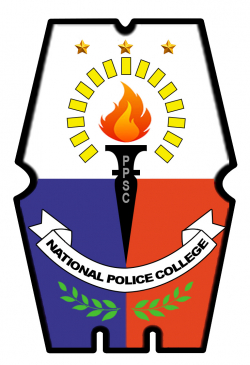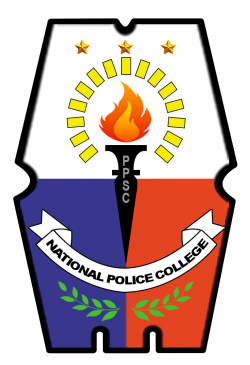KALINGA’S BODONG SYSTEM: AN ANALYSIS OF ITS RELEVANCE IN THE LAW ENFORCEMENT AND JUSTICE SYSTEM IN THE PROVINCE

Type
Thesis
Authors
PCPT AGBANNAOAG, ADRIAN E. PCT LAGUNDINO, MARK JUNE O, ( PCT PACRES, JOHN LOUISE SALVADOR S. )
Category
PSOAC
[ Browse Items ]
Tags
Abstract
THE CASE
The Bodong system, also referred to as a “peace pact,” is a sociocultural and economic institution that was painstakingly created over the course of centuries out of a need for collective security. It provides the framework for linking diverse tribes and communities that have emerged out of their fervent desire to live in peace and social security, with the conviction that progress will bring about economic development and social stability. This system was formulated from the traditional practice in the province with a constitution and Pagta, an agreement.
The Philippine National Police’s assistance in Bodong system under law enforcement and the criminal justice system, along with the mediation of Bodong holder (Peace Pact Leaders), has been a great help to the province by improving the effectiveness of crime solution and averting conflict between various tribes and to the whole community.
The Republic Act 8371 specifically Chapter IV Section 14, Pagta (Law of Bodong). And the Executive Otrder No. 220 series of 1086 declare mandates that served as the legitimate bases and references of the researchers in hypothesizing the title of their study. RA8371 Chapter IV Sec. 14 provides:
“The ICCs/IPs shall have the right to use their commonly accepted justice systems, conflict resolution institutions, peace building processes or mechanisms, and other customary laws and practices within their respective communities and as may be compatible with the national legal system and with internationally recognized human rights.”
Pagta (Law of Bodong) states:
Preamble
“We, the Kalinga people of the Cordillera Philippines, invoking the guidance of the Almighty Kabuniyan, exercising or inalienable rights to preserve, promote and maintain the Bodong system of the governance which our people have practiced since time immemorial, to guarantee and ensure every Kalinga the protection of life, liberty, property, freedom, equality, justice, peace, and development and sustainability of our patrimony, for our general wellbeing and that of our prosperity does hereby adopt this Pagta of the Bondong.”
Article II Sec. 1:
“The Bodong Recognized the rule of law.”
EO 220 s. 1987:
The CAR has the responsibility for the development of indigenous laws and political institutions, particularly those of direct democracy and collective leadership, as well as the promotion of indigenous institutions and processes for conflict resolution and dispute settlement. The executive order also states that indigenous custom, traditions, languages, and cultures are to be preserved and enhanced. Moreover, the strengthening of the Bodong System of unity and cooperation is emphasized.
The provision of the articles above contributes to the researchers’ interest and likewise provided them a setting that ignites their desire to analyze the relevance of Bodong in the Law Enforcement and Justice System of Ykalingas in the province.
The analysis of the relevance of the Bodong system or Peace Pact in the implementation of law and order and a fair justice system which this study is intended to be in one way or another protects and advances cultural institutions and traditions of the Kalinga people being an indigenous cultural community. Pursuing a deeper understanding of the system is comparable to the study of Ullman (1980), which states that through “peace pact”, nations live in peace. Thus, ordinances were structured to uphold peace and congruence between settlers of certain places.
The Bodong system, also referred to as a “peace pact,” is a sociocultural and economic institution that was painstakingly created over the course of centuries out of a need for collective security. It provides the framework for linking diverse tribes and communities that have emerged out of their fervent desire to live in peace and social security, with the conviction that progress will bring about economic development and social stability. This system was formulated from the traditional practice in the province with a constitution and Pagta, an agreement.
The Philippine National Police’s assistance in Bodong system under law enforcement and the criminal justice system, along with the mediation of Bodong holder (Peace Pact Leaders), has been a great help to the province by improving the effectiveness of crime solution and averting conflict between various tribes and to the whole community.
The Republic Act 8371 specifically Chapter IV Section 14, Pagta (Law of Bodong). And the Executive Otrder No. 220 series of 1086 declare mandates that served as the legitimate bases and references of the researchers in hypothesizing the title of their study. RA8371 Chapter IV Sec. 14 provides:
“The ICCs/IPs shall have the right to use their commonly accepted justice systems, conflict resolution institutions, peace building processes or mechanisms, and other customary laws and practices within their respective communities and as may be compatible with the national legal system and with internationally recognized human rights.”
Pagta (Law of Bodong) states:
Preamble
“We, the Kalinga people of the Cordillera Philippines, invoking the guidance of the Almighty Kabuniyan, exercising or inalienable rights to preserve, promote and maintain the Bodong system of the governance which our people have practiced since time immemorial, to guarantee and ensure every Kalinga the protection of life, liberty, property, freedom, equality, justice, peace, and development and sustainability of our patrimony, for our general wellbeing and that of our prosperity does hereby adopt this Pagta of the Bondong.”
Article II Sec. 1:
“The Bodong Recognized the rule of law.”
EO 220 s. 1987:
The CAR has the responsibility for the development of indigenous laws and political institutions, particularly those of direct democracy and collective leadership, as well as the promotion of indigenous institutions and processes for conflict resolution and dispute settlement. The executive order also states that indigenous custom, traditions, languages, and cultures are to be preserved and enhanced. Moreover, the strengthening of the Bodong System of unity and cooperation is emphasized.
The provision of the articles above contributes to the researchers’ interest and likewise provided them a setting that ignites their desire to analyze the relevance of Bodong in the Law Enforcement and Justice System of Ykalingas in the province.
The analysis of the relevance of the Bodong system or Peace Pact in the implementation of law and order and a fair justice system which this study is intended to be in one way or another protects and advances cultural institutions and traditions of the Kalinga people being an indigenous cultural community. Pursuing a deeper understanding of the system is comparable to the study of Ullman (1980), which states that through “peace pact”, nations live in peace. Thus, ordinances were structured to uphold peace and congruence between settlers of certain places.
Number of Copies
1
| Library | Accession No | Call No | Copy No | Edition | Location | Availability |
|---|---|---|---|---|---|---|
| NPC Library | 676543 | 1 | Yes |




